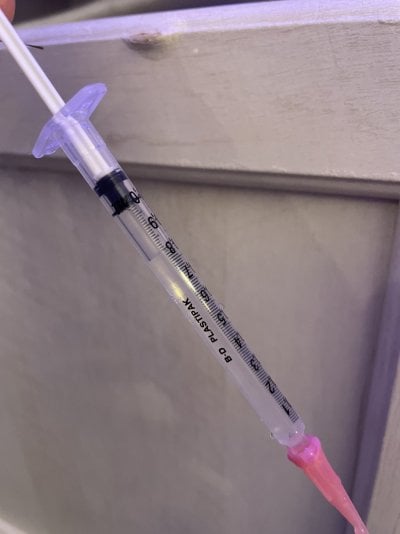OK guys.. here is a silly rookie question for ya..
When you draw out water via the syringe to do your tests, do you tap out the air bubble that gets trapped or measure to the line with the bubble there?
For a test that only uses 1ml of water (Nitrate test) that bubble could swing results quite a bit.
When you draw out water via the syringe to do your tests, do you tap out the air bubble that gets trapped or measure to the line with the bubble there?
For a test that only uses 1ml of water (Nitrate test) that bubble could swing results quite a bit.





















